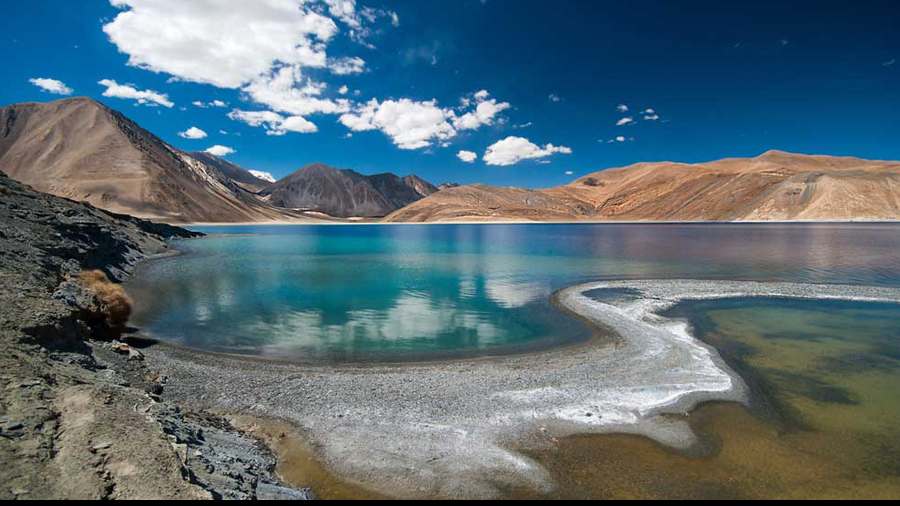
Signs of second Chinese bridge on Pangong Lake : Corroboration comes from Damien Symon, a geospatial intelligence researcher at the Intel Lab
Don't Miss
- Attempt to divert attention from economic crisis: Congress on charge sheet in National Herald case
- Properties declared waqf including 'waqf by user' won't be denotified, SC proposes
- Supreme Court Directs Completion Of Child Trafficking Case Trials In 6 Months; Issues Directions To States On Handling Such Cases
Imran Ahmed Siddiqui | TT | New Delhi | 19.05.22 : A ground assessment by the Indian security establishment suggests that the Chinese army is building a second bridge on the Pangong Lake in eastern Ladakh, after constructing one in January.
“The latest ground assessment has revealed increased infrastructure activity by China along the Line of Actual Control (LAC) in eastern Ladakh, including the construction of a second bridge on the Pangong Lake. We are keeping a close watch,” a security official attached to the Union home ministry told The Telegraph.
Sources said China was also ramping up its infrastructure within India-claimed lines on the strategic Depsang Plains and elsewhere, building roads and settlements for its troops.
In January, satellite images had suggested that the Chinese army was building an eight-metre-wide bridge within India-claimed lines over the Pangong Lake, which security experts had said would give China “a strategic edge”.
Corroboration of the claims about a second bridge came from Damien Symon, a geospatial intelligence researcher at the Intel Lab, and Ladakh councillor Konchok Stanzin.
Symon on Wednesday tweeted satellite images of what he said was the under-development second bridge and wrote: “Continued monitoring of the bridge construction at Pangong Tso shows the further development on site, new activity shows a larger bridge being developed parallel to the first. Likely in order to support larger/ heavier movement over the lake.”
Stanzin, who represents Chushul in the Ladakh Development Council, tweeted: “China building a second bridge over Pangong Lake. It is a huge psychological threat and a big concern for the nation’s security. Unlimited building infrastructure by China on the border is a serious concern….”
Sources said that despite “partial” disengagement at the Pangong Lake last year, the Chinese army has been building infrastructure in and around the lake.
Neither the government nor the Indian army has so far officially confirmed the construction of the second bridge.
After satellite images showed the first Chinese bridge in January, India’s foreign ministry had played it down, saying the activity was happening in areas under “illegal occupation by China for around 60 years” – that is, not on the territory encroached on since May 2020.
The Indian and Chinese armies have been locked in a standoff at multiple points in Ladakh, with the Chinese estimated to have taken over close to 1,000sqkm of India-claimed territory.
The border standoffs in Hot Springs and Depsang Plains are continuing while there have been “partial” disengagements from the Galwan Valley, Pangong Lake and Gogra with both armies stepping back by an equal distance. The Chinese still remain within India-claimed lines at these places, while the Indian troops have retreated further back.


0 Response to "Signs of second Chinese bridge on Pangong Lake : Corroboration comes from Damien Symon, a geospatial intelligence researcher at the Intel Lab"
Post a Comment
Disclaimer Note:
The views expressed in the articles published here are solely those of the author and do not necessarily reflect the official policy, position, or perspective of Kalimpong News or KalimNews. Kalimpong News and KalimNews disclaim all liability for the published or posted articles, news, and information and assume no responsibility for the accuracy or validity of the content.
Kalimpong News is a non-profit online news platform managed by KalimNews and operated under the Kalimpong Press Club.
Comment Policy:
We encourage respectful and constructive discussions. Please ensure decency while commenting and register with your email ID to participate.
Note: only a member of this blog may post a comment.